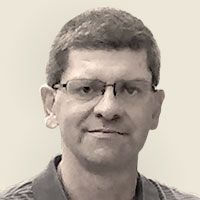For the past few years, every student in the Neuroanatomy class at the University of Illinois at Urbana-Champaign (UIUC) has been required to use Primal Pictures’ 3D Anatomy for Speech Language Pathology (3D SLP). As for textbooks? Well, those are optional. Each year, the Department of Speech and Hearing Science awards over 100 students a BS in Speech and Hearing Science, with concentrations in Speech Language Pathology, Audiology, or Human Communication Science.
The virtual approach leaves my TA and me with more time to focus on teaching.
To succeed as a practitioner, our students need a strong knowledge base of the head and neck anatomy that comprises the vocal tract," says Torrey Loucks, PhD, Assistant Professor in the College of Applied Health Sciences. "Nearly all of our students go on to pursue a Master's degree Speech Language Pathology, and become practicing speech pathologists or therapists.
Dr Loucks has used Primal Pictures’ specialized learning tools for head and neck, and then 3D SLP, since he began teaching Neuroanatomy at UIUC in 2009. Before he started, professors used a cadaver to teach portions of the class. The school could not continue to use cadavers, due to the time and financial resources required to run a cadaver lab. They were seeking learning tools that would give students an equally realistic learning experience. Dr Loucks discovered Primal Pictures and it was immediately a hit.
“Many students’ needs for visualizing anatomy could not be fully met with a cadaver learning experience,” says Loucks. “The cadaver was only available to them on a limited basis, and needed to be shared by many students. Cadavers also required extra effort by the instructors, while the virtual approach leaves my TA and me with more time to focus on teaching.”
When the school began using 3D SLP, they found that students were comfortable learning online. And, in today’s high-definition world, students’ expectations of vivid imagery and interactivity were also better met by the 3D tools. 3D SLP includes 3D animations of movements of the face (such as elevation/depression of the corners of the mouth and opening/closing of the lips), movements of the larynx/pharynx, movements of the TMJ and respiration, as well as 2D animations covering mechanisms of swallowing, mechanisms of articulation and voice, mechanisms of voice production and actions of the larynx.
Students also appreciated the flexibility the tools offered, especially when completing lab assignments. Throughout the semester, students must complete six different lab assignments on head and neck anatomy. All of these labs can be completed in their entirety using just 3D SLP, so students are able to complete the required labs in their own time frame, without reserving time in the cadaver lab.
“When we adopted this new tool, we realized that only certain sections of our textbook were still relevant. So while we require students to purchase online access to 3D SLP for a semester, they are also given the option of purchasing just the textbook chapters they need,” says Loucks. “This way we don’t require them to spend well over one hundred dollars on a book they may never use again.”
While he has not yet completed a detailed study on class performance, Dr Loucks finds that students who do well in the class usually are those who are most well versed in how to use 3D SLP.
“I know the product is helping me achieve my objective of exposing the students to, and fully engaging them with, detailed anatomy of the respiratory system and vocal tract.”
